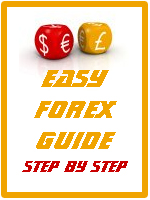FOREX FAQ
 Q: What is Foreign Exchange?
Q: What is Foreign Exchange?
A: The Foreign Exchange market, also referred to as the "Forex" market, is one of the largest financial markets in the world, with a daily average turnover of approximately US$1.9 trillion. Foreign Exchange is the simultaneous buying of one currency and selling of another. The world's currencies are on a floating exchange rate and are always traded in pairs, for example Euro/Dollar or Dollar/Yen.
Q: Where is the central location of the FX Market?
A: FX Trading is not centralized on an exchange, as with the stock and futures markets. The FX market is considered an Over the Counter (OTC) or 'Interbank'/'Interdealer' market, due to the fact that transactions are conducted between two counterparts over the telephone or via an electronic network.
Q: Who are the participants in the FX Market?
A: The Forex market is called an 'Interbank' or 'Interdealer' market due to the fact that historically it has been dominated by banks, including central banks, commercial banks, and investment banks. However, the percentage of other market participants is rapidly growing, and now includes large multinational corporations, global money managers, registered dealers, international money brokers, futures and options traders, and private speculators.
Q: When is the FX market open for trading?
A: A true 24-hour market from Sunday 5:00 PM ET to Friday 5:00 PM ET, Forex trading begins each day in Sydney, and moves around the globe as the business day begins in each financial center, first to Tokyo, then London, and New York. Unlike any other financial market, investors can respond to currency fluctuations caused by economic, social and political events at the time they occur - day or night.
Q: What are the most commonly traded currencies in the FX markets?
A: The most often traded or 'liquid' currencies are those of countries with stable governments, respected central banks, and low inflation. Today, over 85% of all daily transactions involve trading of the major currencies, which include the US Dollar (USD), Japanese Yen (JPY), Euro (EUR), British Pound (GBP), Swiss Franc (CHF), Canadian Dollar (CAD), and the Australian Dollar (AUD).
Q: What is Margin?
A: Margin is essentially collateral for a position. It allows traders to take on leveraged positions with a fraction of the equity necessary to fund the trade. In the forex market leverage ranges from 1% to 2%. Of course, increasing leverage increases risk.
Q: What does it mean have a 'long' or 'short' position?
A: In trading parlance, a long position is one in which a trader buys a currency at one price and aims to sell it later at a higher price. In this scenario, the investor benefits from a rising market. A short position is one in which the trader sells a currency in anticipation that it will depreciate. In this scenario, the investor benefits from a declining market. However, it is important to remember that every FX position requires an investor to go long in one currency and short the other.
Q: What about terms like "bid/ask", "spread", and "rollover"?
A: DERSER.COM has an extensive Glossary that provides detailed definitions of all Forex related terms.
Q: How are currency prices determined?
A: Currency prices are affected by a variety of economic and political conditions, most importantly interest rates, inflation and political stability. Moreover, governments sometimes participate in the Forex market to influence the value of their currencies, either by flooding the market with their domestic currency in an attempt to lower the price, or conversely buying in order to raise the price. This is known as Central Bank intervention. Any of these factors, as well as large market orders, can cause high volatility in currency prices. However, the size and volume of the Forex market makes it almost impossible for any one entity to "drive" the market for any length of time.
Q: How do I manage risk?
A: The most common risk management tools in FX trading are the limit order and the stop loss order. A limit order places restriction on the maximum price to be paid or the minimum price to be received. A stop loss order is set at a predetermined price to automatically liquidate a particular position in order to limit potential losses should the market move against an investor's position. Contingent orders may not necessarily limit your risk for losses.
Q: What kind of trading strategy should I use?
A: Currency traders make decisions using both technical factors and economic fundamentals. Technical traders use charts, trend lines, support and resistance levels, and numerous patterns and mathematical analyses to identify trading opportunities, whereas fundamentalists predict price movements by interpreting a wide variety of economic information, including news, government-issued indicators and reports, and even rumor. The most dramatic price movements however, occur when unexpected events happen. The event can range from a Central Bank raising domestic interest rates to the outcome of a political election or even an act of war. Nonetheless, more often it is the expectation of an event that drives the market rather than the event itself.